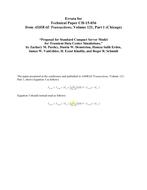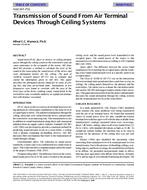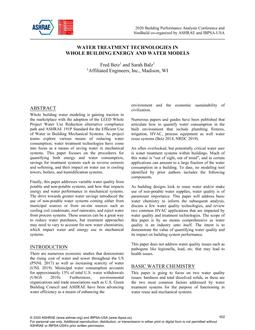Infiltration has long served the residential ventilation needs in North America. In Northern Europe it has been augmented by purpose-provided natural ventilation systems–so-called passive ventilation systems–to better control moisture problems in dwellings smaller than their North American counterparts and in a generally wetter climate. The growing concern for energy consumption, and the environmental impacts associated with it, has however led to tighter residential construction standards on both continents and as a result problems associated with insufficient background ventilation have surfaced. Recognizing the energy penalty of uncontrolled natural ventilation, building researchers and practitioners in North America are turning to mechanical systems to provide the necessary ventilation for air quality control. Northern Europeans are following suit but have not completely abandoned the passive ventilation methods that have served them for the past century. Research programs have been initiated in Britain, Belgium and France, in particular, to improve the understanding and performance of these traditional and largely empirically-based ventilation methods in the hope that they can more reliably provide basic background ventilation while avoiding the energy penalty associated with uncontrolled over-ventilation. This state of affairs begs, then, a simple question:
Can European passive ventilation systems be adapted for use in North American dwellings to provide general background ventilation for air quality control?
This paper attempts to answer this question. The configuration, specifications and performance of the preferred European passive ventilation system–the passive stack ventilation (PSV) system–will be reviewed; innovative components and system design strategies recently developed to improve the traditional PSV system performance will be outlined; and alternative system configurations will be presented that may better serve the climatic extremes and more urban contexts of North America. While these innovative and alternative passive ventilation systems hold great promise for the future, a rational method to size the components of these systems to achieve the control and precision needed to meet the conflicting constraints of new ventilation and air tightness standards has not been forthcoming. Such a method will be introduced in this paper and an application of this method will be presented.
Units: Dual
Citation: Symposium, ASHRAE Transactions, vol. 105, pt. 2, Seattle 1999
Product Details
- Published:
- 1999
- Number of Pages:
- 13
- File Size:
- 1 file , 310 KB
- Product Code(s):
- D-7447


